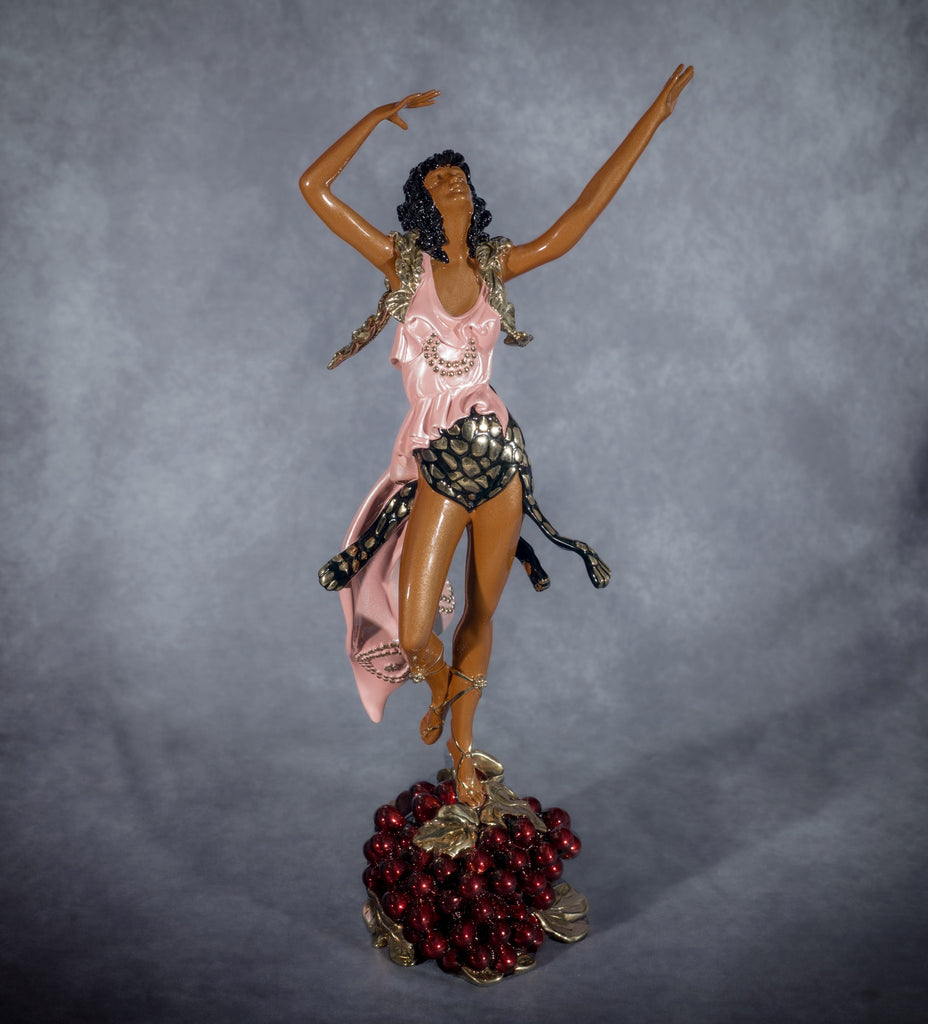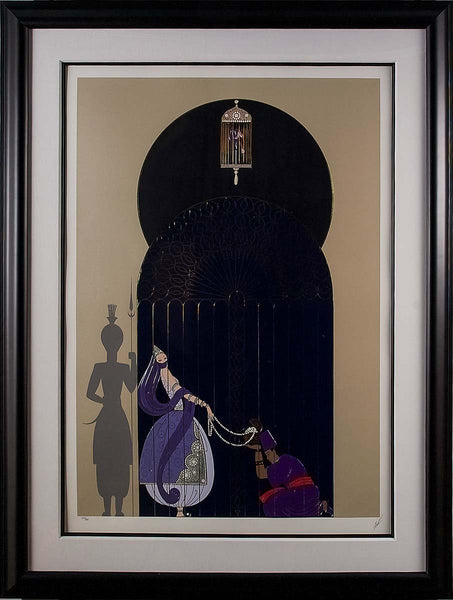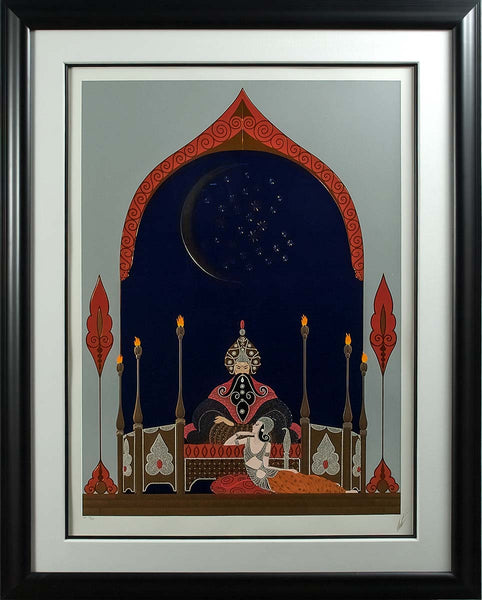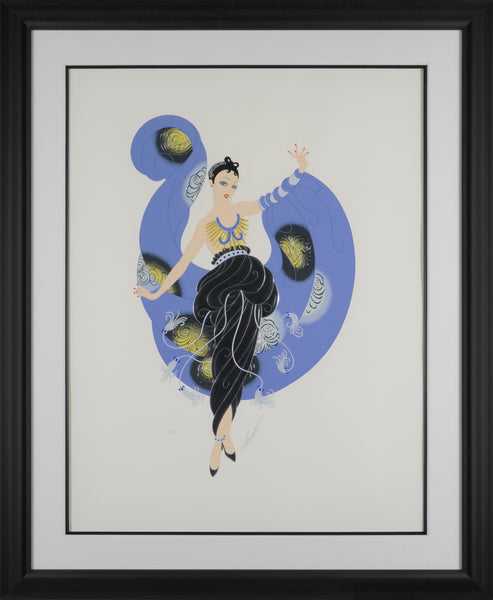Upload a photo of your space
For best results we recommend marking 10 inches on your wall with tape to get a sense of scale. Make sure to have the floor visible in the photo.





About the Work
In 1919, Erté was at work designing costumes for the Bal des Arts production "Follower of Dionysus". Gleaming with fantastical ideas from Greek Mythology, Erté’s work soon became recognized as the finest of its time.
In Greek Mythology, Bacchantes were women who worshipped Dionysus, the God of Wine. Upon drinking the nectar, they would become frenzied, trailing behind the god in dance and song wearing animal skins and waving ivy-wreathed wands.
In his sculpture entitled "Bacchante," Erté brings to life the worshipper from Greek Mythology complete with ivy garland and animal skin attire. Like the women in the myths, Erté’s dancing enchantress is clearly enthralled by the nectar elicited from the grapes beneath her feet. Her graceful figure with arms outstretched to the heavens embodies both the art of dance and association with the Divinities.
Perched on perhaps one of Erté’s most interesting sculpture bases, a cluster of luscious ripe grapes, this sculpture is a feast for the eyes that will satisfy all of your art collectors' desires. The sculpture dimensions are 21 x 6 x 6" and the sculpture ships accompanied by a certificate of authenticity.
This beautiful bronze sculpture was inspired by a serigraph created in 1987, entitled "Bacchante".
The bronze sculpture/casting medium and process is, and has always played, a fascinating part in the history of art, admired by civilization for thousands of years and continuously developed with modern technology. Erté sculpture exemplifies the timeless beauty of this intriguing art form and manifests the artist’s personal unique flair in every bronze creation.
About the Artist
Erté was born Romain de Tirtoff in St. Petersburg, Russia on November 23rd, 1892 and was raised amidst Russia's social elite. At the age of five he created an evening gown for his mother and managed to persuade the adults to craft it, they were astounded by the results. In 1912, Romain left St. Petersburg for Paris at the age of nineteen with the aim of becoming an artist. After working with Paul " Le Magnifique" Poiret on several theatrical productions Romain, still under the pseudonym of Erte, began to work more independently. He hand-crafted original costume and fashion designs for many of the era’s most renowned actresses, including Joan Crawford, Lillian Gish, Marion Davies, Anna Pavlova, Norma Shearer, and others. His masterpieces for the stage included extravagant production designs at venues such as New York’s Radio City Music Hall, the Casino de Paris, and the Paris Opera. In 1915 he began his long professional relationship with Harper's Bazaar and created 240 covers for the esteemed magazine. For 6 months in 1916, Erté simultaneously worked with Vogue as well. As a result of his highly publicized success, Erté would later be called the father of the ‘Art Deco’ movement.
Please utilize the AR experience in a well-lit room.
Scan the room for surface detection.

Artwork will place in your room.
Using your fingers, align the horizontal white line
with your floor.

Double tap the artwork to scale to 100% size
and pinch to move on the screen.







